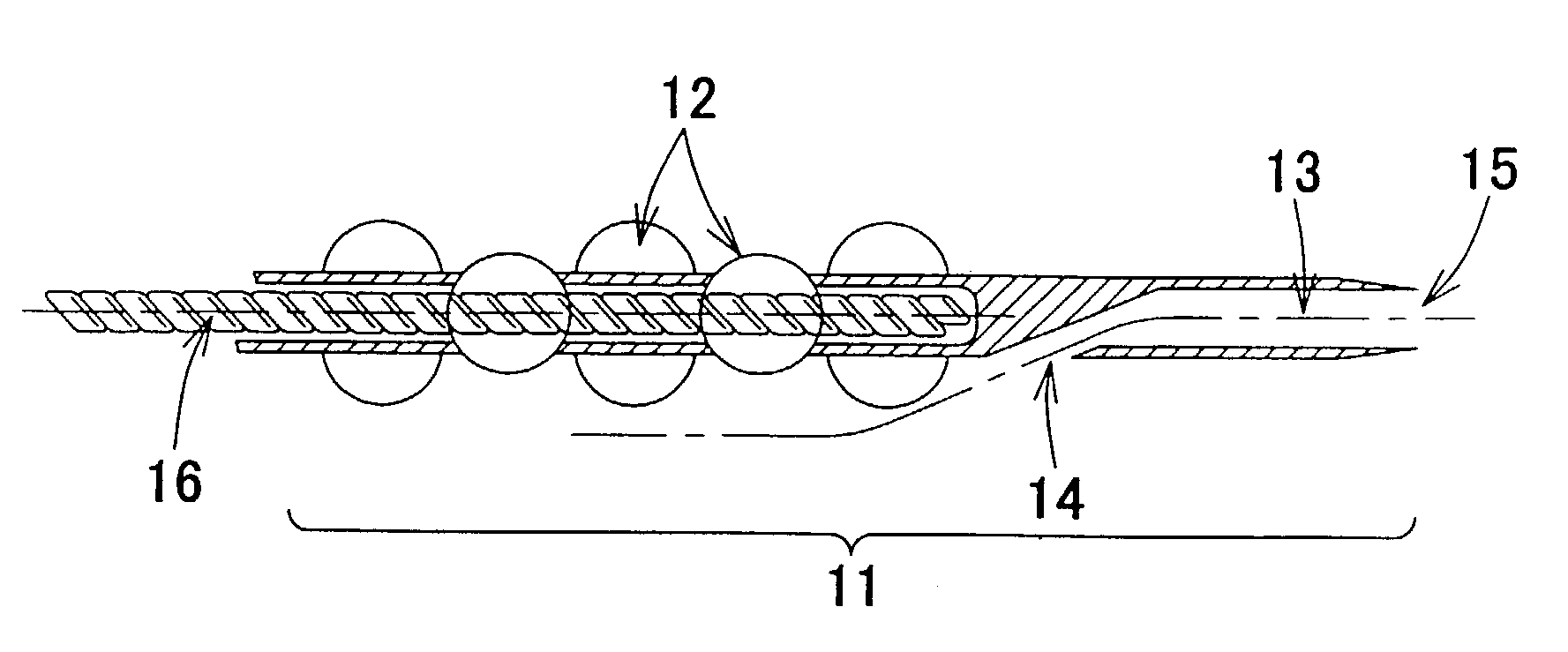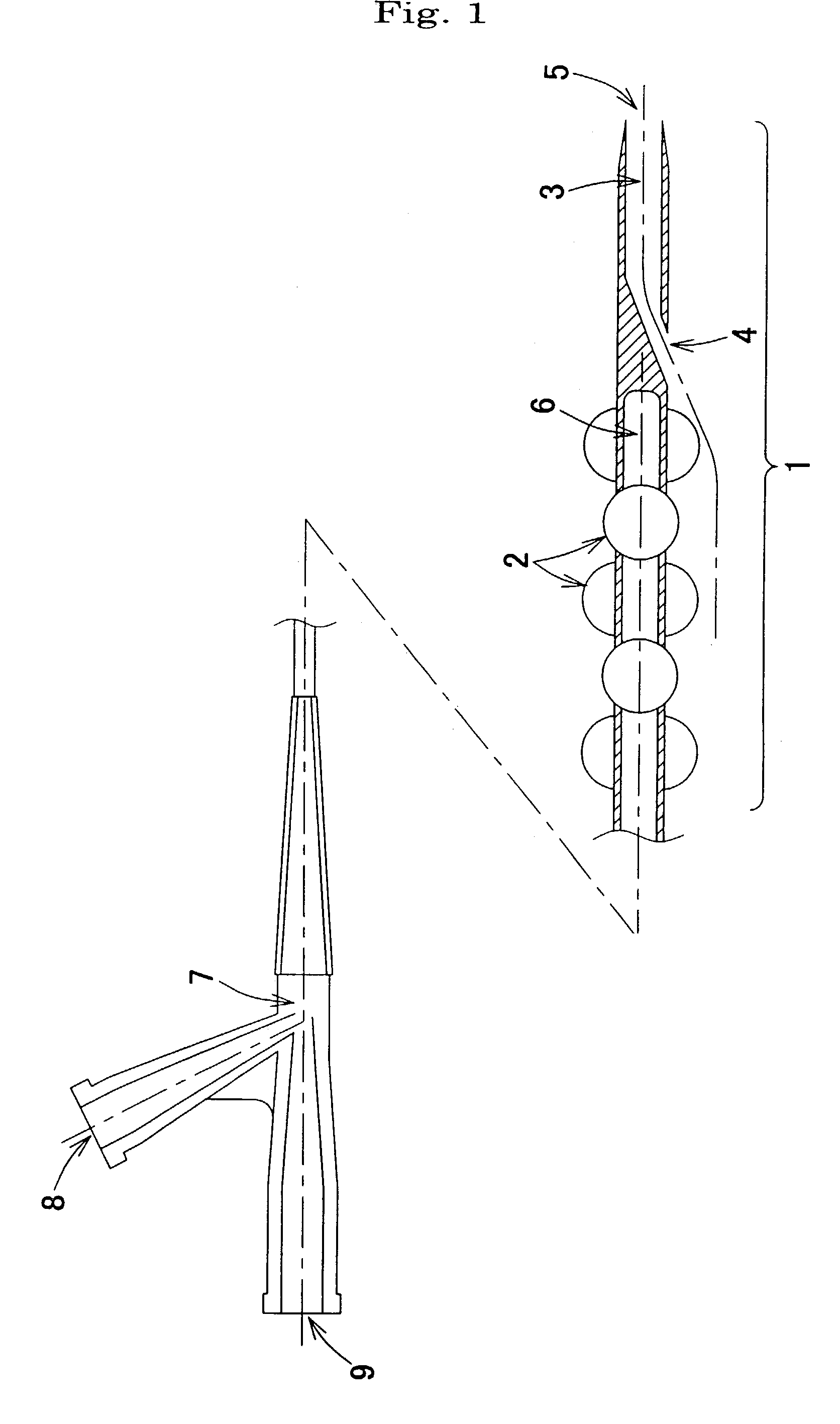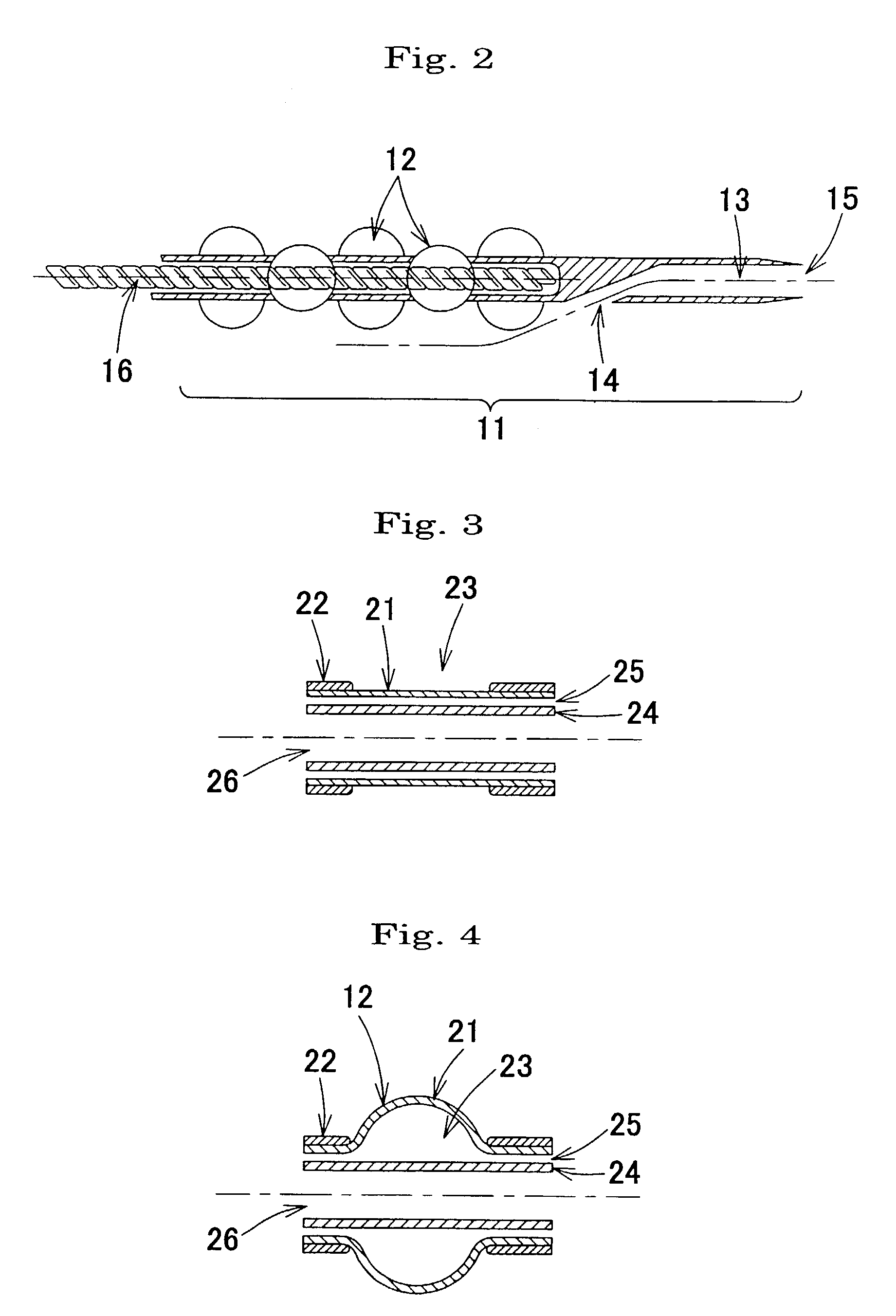However, there is a large problem with this PTCA therapy in that after the therapy,
restenosis, i.e. repeated
stenosis, occurs with a probability of approximately 40% within a short time period of 3 to 6 months.
It has been shown that
restenosis is caused by the
blood vessel walls being damaged through the forcible expansion of the
blood vessel by the balloon, and then
smooth muscle cells proliferating excessively during the subsequent healing process.
Regarding irradiating the
blood vessel walls uniformly, if the
radiation source shifts away from the center of the blood vessel cross section when the
radiation source is positioned at the lesioned part in the blood vessel, then the blood vessel wall that is too close to the radiation source will be irradiated excessively, resulting in
necrosis of the blood vessel, an
aneurysm or the like.
In the case that such a long time is required as the
irradiation time, if the coronary
artery blood were not to flow to the
peripheral coronary artery blood vessels during the
irradiation, then the myocardial cells in
peripheral parts would become ischemic, causing serious symptoms such as
angina.
However, in the case of these spiral lobes (the spiral balloon), unless special measures are adopted, problems and inconveniences such as the following arise.
A first problem is that if the thickness of the balloon is constant in the circumferential direction after molding, then in the balloon's natural expanded state, the balloon will not be a spiral shape, but rather will be a straight shape.
Consequently, when one attempts to wind the balloon in a spiral fashion around the catheter shaft and fix the balloon using an
adhesive or the like, the balloon tries to return to its natural straight shape, and hence the fixing of the balloon in a certain position on the surface of the catheter shaft is difficult, i.e. there is a difficulty in terms of fixing the balloon precisely in position, and hence reproducibility is poor.
This is a big
disadvantage from a manufacturing perspective in particular in the case of using an
adhesive having a long hardening time.
Moreover, if the spiral balloon is not fixed precisely in position, i.e. if places exist where the
groove width is too large, then the precision of the centering will tend to become poor, which is a serious problem from a clinical perspective.
A second problem is that when fixing the straight balloon onto the catheter shaft such that the balloon goes into a spiral state, it is necessary to twist the balloon slightly forcibly.
In such a case, the time for which the radiation source is in the twisted part of the shaft will become long, and hence the patient's
exposure to radiation at this part will increase, which is not only a large problem in terms of safety, but moreover it will no longer be possible to irradiate the region to be treated with radiation effectively.
A third problem is that when the balloon has been expanded, there will be a large stress in the balloon due to trying to return to the natural straight state, and in the case that the expansion pressure is high, there will be a risk of the balloon dropping off the shaft due to this stress.
These may be serious problems from a clinical perspective.
A fourth problem is that before the balloon is expanded, and when the balloon has been expanded and then contracted, there are large level differences on the outer surface.
In particular, the level differences on the balloon part after the balloon has been expanded and then contracted are marked, resulting in a large resistance when moving through a blood vessel.
Moreover, in the worst cases, the inside of the blood vessel may be damaged.
However, problems and inconveniences such as the following arise with the structure disclosed in Japanese
Patent Application Laid-open No. 10-179751.
A first problem is that the shape of the centering balloon consists of spokes that are long in the axial direction; when the centering balloon is expanded, the balloon tries to return to its natural straight shape, and hence this part becomes rod-like and hard.
In the case for example that the lesioned part to be treated is an extremely curved blood vessel, the balloon may lose out to the curvature of the blood vessel and may thus not expand sufficiently to realize
perfusion, and moreover the blood vessel may be irradiated excessively with radiation at the part where the balloon has not expanded sufficiently, which may cause
necrosis of the blood vessel, an
aneurysm or the like.
Moreover, the centering balloons, two or more of which are provided as described above, will not expand uniformly, and hence it will not be possible to realize the centering of the radiation source, and as a result part of the lesioned region to be treated may be irradiated excessively with radiation, which may cause
necrosis of the blood vessel, an
aneurysm or the like.
Furthermore, upon expanding the centering balloon, a force acts to straighten out the curved blood vessel, and with a
peripheral blood vessel in particular the blood vessel may be damaged.
A second problem is that because a centering balloon having at least two expandable spokes is installed on the outer surface close to the tip of the catheter, even before expansion, the structure is such that there are large level differences on the outer surface of the balloon.
The catheter must proceed along a narrow, curved blood vessel as far as the region to be treated, but if there are large level differences around the catheter, then the ability of the surgeon to maneuver the catheter will be impaired, and it may not be possible to dispose the catheter in the region to be treated, and moreover the inside of the blood vessel may be damaged by the level differences.
Moreover, in the worst cases, the inside of the blood vessel may be damaged.
 Login to View More
Login to View More 


